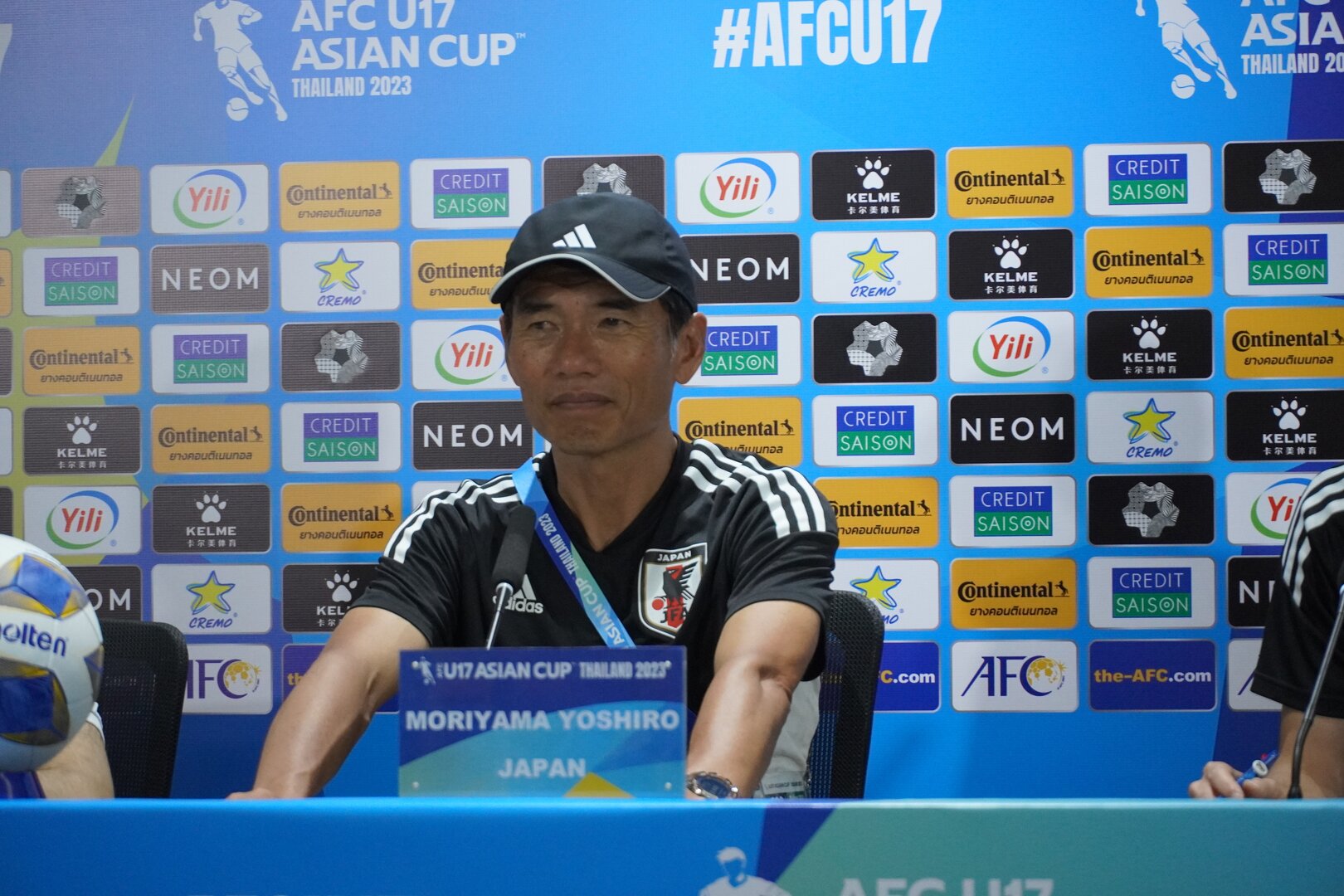Indian football has lots of potential and it will be a big rivalry in future, says Yoshiro Moriyama

The Samurai Blues put the Blue Colts to the sword and slammed eight past them.
Defending champions Japan U-17 inflicted a devastating 8-4 defeat on India’s U-17 squad at the Rajamangala National Stadium in Thailand in the AFC U-17 Asian Cup 2023 on Friday. The Japanese opened the floodgates as early as the 13th minute with midfielder Kawamura finishing off Ryunosuke Yada’s cutback. Subsequently, they continued their ruthless onslaught with a brace from striker Gaku Nawata. The youngster demonstrated flawless composure to score his second and showcased his predatory instincts for his first.
After the break, the Samurai Blue were momentarily held back after India got on the scoresheet. However, centre-back Shuto Nagano’s thumping header off a corner reasserted their dominance. Midfield engine Kohei Mochizuki added another to the tally off substitute Yoshinaga’s cross.
India’s fightback was spirited and even led the bold Japan side to commit some errors; one being an own goal from Daiki Miyagawa. Despite that, Japan persevered and showed no mercy as Nakajima popped up in the box to score a screamer. Shortly after India added another to their tally courtesy of a blunder by the goalscoring centre-half Nagano.
Substitutes Yamaguchi and Sugiura finished the game as the latter put the final nail in the coffin. With seven points in the bag and a berth in the knockout stages, here’s what manager Yoshiro Moriyama had to say to the media in the post-match press conference.
On the match and the team’s performance
Japan were nothing short of brilliant on the attack with a flurry of eight goals on the scoresheet. The defence may still need some plugging given how they conceded four. But the head coach was impressed by his team’s showing as he summarised:
“In the first half, we scored three goals but we had better opportunities that we couldn’t finish. During halftime, we substituted three players. Then, in the second half, despite the fans cheering India on, we went out there and finished the job well. ”
On whether they could have done better to score more goals in the first half and on Uzbekistan’s win
Despite scoring three in the first half, the Samurai Blue had some definite chances which they couldn’t finish off. They did, however, turn up in the second half and convert their chances better. While their goal difference led them to the top spot, Uzbekistan also finished the group stage level on points. The mentor commented on their approach as well as Uzbekistan's game as he mentioned:
“We did not care about the other game(Vietnam vs Uzbekistan) and instead focused on winning the match. Coming to the changes at half-time; I wanted the players to recover in time for the other games. I feel like we have a handicap in terms of the tournament schedule. Our next game is an important one against Australia who will, in comparison, be able to take three days of rest. So while we are departing for the hotels, they are already busy relaxing. This handicap of two to three days is an impactful and decisive one. Keeping the tournament schedule in mind, we had to incorporate the changes we made and I hope that in the future it will be more fair to all participants.”
Message to AIFF and what we can learn from Japanese grassroots football along with analysis of the Indian side
European stars like Shinji Kagawa and Andres Iniesta continue to ply their trade in the J-League. In addition, the Japanese national teams’ valiant run to the round of 16 in the Qatar FIFA World Cup 2022 was the stuff of fairytales. The fact that they beat European heavyweights like Spain and Germany is testimony to the success of Japanese grassroots football. Coach Moriyama provided a detailed analysis of how India can learn from them and what their primary difference is, as he concluded :
“I checked the quality of Indian footballers and I was impressed by the technique and physical prowess of the players on the pitch. According to me, the primary difference between India and Japan is the fact that we have good grassroots development structures. So basically we have a lot of good players in Japan who are maybe not even in the first team. But we have the luxury of substituting the main players and giving a chance to these promising stars. So, if India’s grassroots-level programs are developed more, Indian football can progress steadily. There is no shortage of potential amongst this batch and they can definitely go the distance.”
Where passion meets insight — blending breaking news, in-depth strategic analysis, viral moments, and jaw-dropping plays into powerful sports content designed to entertain, inform, and keep you connected to your favorite teams and athletes. Expect daily updates, expert commentary and coverage that never leaves a fan behind.
- Five foreigners who left ISL because of uncertainty
- Crystal Palace vs Fulham Preview, prediction, lineups, betting tips & odds | Premier League 2025-26
- Watford vs Birmingham City Preview, prediction, lineups, betting tips & odds | EFL Championship 2025-26
- Blackburn Rovers vs Wrexham Preview, prediction, lineups, betting tips & odds | EFL Championship 2025-26
- Sheffield United vs Leicester City Preview, prediction, lineups, betting tips & odds | EFL Championship 2025-26
- Top six quickest players to reach 100 Bundesliga goal contributions; Kane, Aubameyang & more
- Top three highest goalscorers in French football history; Kylian Mbappe & more
- With ₹19.89 crore bank balance; AIFF & Indian football standing on edge of financial collapse?
- AFCON 2025: All nations' squad list for Morocco
- Zlatan Ibrahimović names one of Lionel Messi’s sons as his “heir”